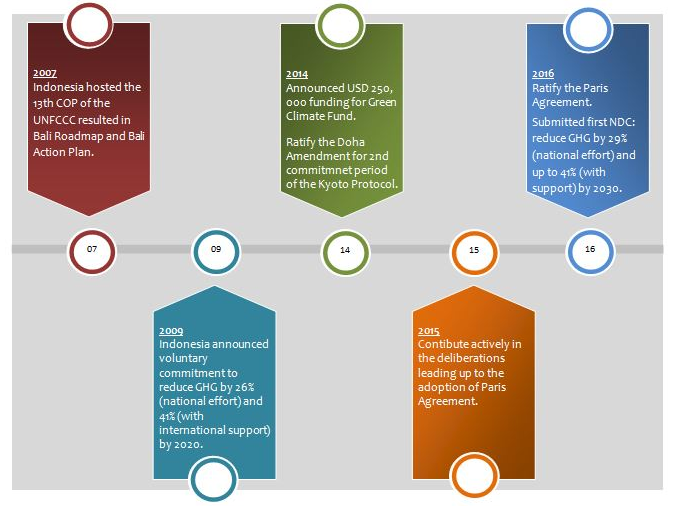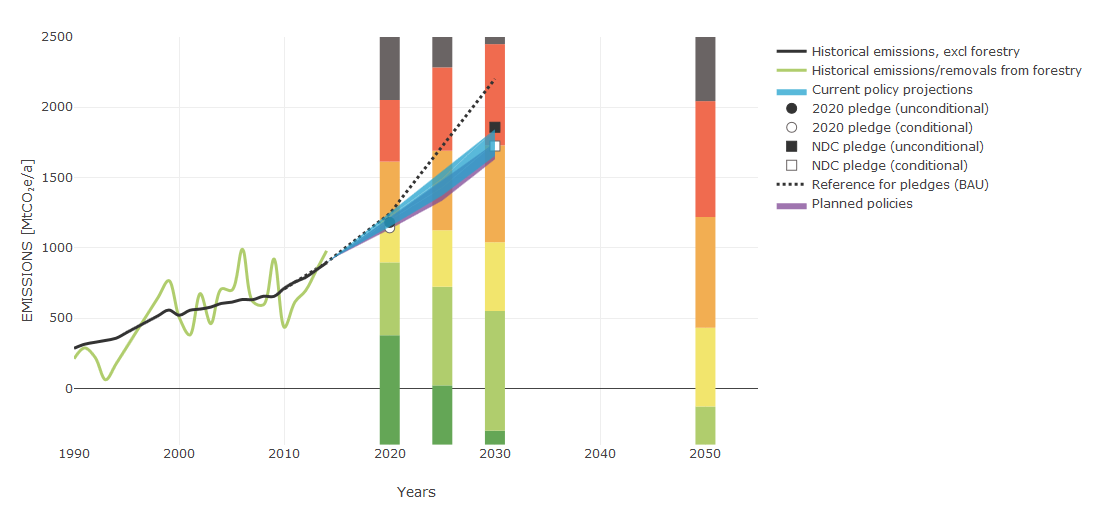NDC
The Paris Agreement
The Paris Agreement is a landmark agreement to combat climate change and to accelerate and intensify the actions and investments needed for a sustainable low carbon future. The Paris Agreement builds upon the Convention and – for the first time – brings all nations into a common cause to undertake take ambitious efforts to combat climate change and adapt to its effects, with enhanced support to assist developing countries to do so.
The Paris Agreement requires all Parties to put forward their best efforts through “nationally determined contributions” (NDCs) and to strengthen these efforts in the years ahead. This includes requirements that all Parties report regularly on their emissions and on their implementation efforts. There will also be a global stocktake every 5 years to assess the collective progress towards achieving the purpose of the agreement and to inform further individual actions by Parties.
Indonesia’s NDC
Indonesia’s 2020-2030 NDC targets are to unconditionally reduce greenhouse gas emissions (GHG) by 29 percent through its own efforts, and up to 41 percent depending upon levels of international cooperation. The most significant reductions will e ahieved in the forestry sector, with the sector accounting for 17.2 percent of the 29 percent reduction, and 23 percent of the 41 percent reduction.
To meet this commitment, Indonesia aims to enhance the use of new and renewable energy from 17% to 23% of total energy consumption in 2025 and up to 29% in 2030. Additionally, to improve land use management, Indonesia has extended the moratorium on new forestry concessions from 2015 to 2017. We also are committed to restore 2 hectares (5 acres) of peat land by 2020.
As a developing country, Indonesia supports the efforts of other developing countries through South-South and Triangular Cooperation on various sectors, inter alia, agriculture, forestry, and coastal management. Indonesia has also been elected as one of the member of the Paris Committee on Capacity building to support and enhance capacity building for developing countries in undertaking their climate actions.

Furthermore, in its updated energy plan, released in 2018, foresees overall lower coal capacity additions than previously stated, but still adds 27 GW of coal-fired power in the next ten years and only 15 GW of renewables over the same period. Planned capacity additions for both gas and renewables have been slashed in favour of coal, and most of the planned renewables come in well after 2020, while a significant share of the planned coal will be commissioned between 2018 and 2022. Between 2012 and 2017, Indonesia’s coal capacity has already increased by 12.2 GW compared to 1.6 GW of renewable energy. By continuing on this high carbon path, Indonesia is risking significant stranded assets in both domestic coal production and coal power plants.
Indonesia’s Nationally Determined Contribution (NDC) also includes a target of reducing GHG emissions including land, land-use change and forestry (LULUCF) by 29% or 41% conditional on international support below BAU in 2030 (roughly equivalent to doubling today emissions levels).

More on Indonesia’s NDC please click the link below:
https://www4.unfccc.int/sites/submissions/INDC/Published%20Documents/Indonesia/1/INDC_REPUBLIC%20OF%20INDONESIA.pdf




